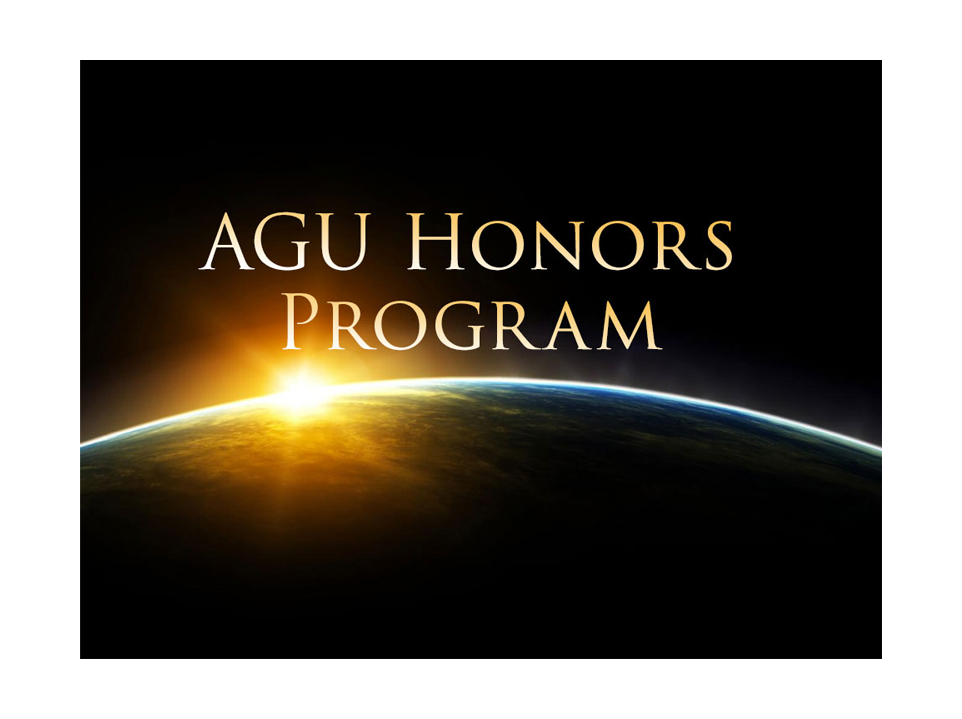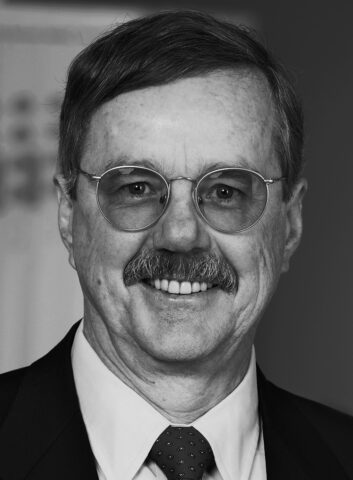Citation
It is a great pleasure and an honor to give the citation for the 2014 Waldo E. Smith Award to Meinrat “Andi” Andreae. Andi is director of the Max Planck Institute for Biogeochemistry in Mainz. Professor Andreae stands out because of his ability to see the big picture, to identify the major questions in science, and to propose a path to solve these key questions. This has put him in leading roles in many international scientific projects and programs and international assessment studies (Intergovernmental Panel on Climate Change, World Meteorological Organization, and many others) as a member of scoping and planning teams that have developed international scientific programs, e.g., the International Geosphere-Biosphere Programme (IGBP) core projects on atmospheric chemistry (IGAC) and on land-atmosphere interaction (iLEAPS).
His early studies showed the importance of marine biogenic sulfur emissions, in which he proposed a feedback loop between marine biota and climate, mediated through the effect of aerosols on clouds. This work structured the critical links with feedbacks between climate and natural biogeochemistry cycles in marine ecosystems and, more recently, also in terrestrial ecosystems. He has also done extensive work on global biomass burning, coordinating the Biomass Burning Experiment (BIBEX) under the International Global Atmospheric Chemistry (IGAC) project.
His investigations on the interactions of atmospheric composition with climate, land use, and the water cycle influenced IGBP to do a higher level of science integration, initiating the Integrated Land Ecosystem-Atmosphere Processes Study (iLEAPS). Under Andreae’s leadership, the studies on aerosol-cloud interactions led to the iLEAPS–IGAC–Global Energy and Water Cycle Experiment (GEWEX) project on aerosol-cloud-precipitation-climate interactions, a critical issue today.
Andreae was instrumental in setting up collaborations between scientists from developed countries and colleagues in developing countries in Africa, South America, and Asia. His extensive long-term collaboration with Brazil, where he was one of the initiators of the Large-Scale Biosphere-Atmosphere Experiment in Amazonia (LBA), was honored by his becoming a member of the Brazilian Academy of Sciences. Andreae is also the central scientist in the Amazon Tall Tower Observatory project, the first tall tower laboratory in any tropical region.
Andreae has been and still is an extremely productive scientist, with over 430 published papers and more than 28,000 citations, giving him an h index of 81. Furthermore, Andi’s personal character is also important; he is always ready to help and to guide undergraduate students, technicians, and colleagues from around the world. In Amazonia, he helped build up a full generation of young scientists during his participation in LBA over the last 15 years.
Andi Andreae’s achievements in geoscience communication are truly outstanding, and I congratulate him on this well-deserved AGU honor.
—Paulo Artaxo, University of São Paulo, Sao Paulo, Brazil
Response
Thank you very much, Paulo, for those kind words. I’d also like to thank AGU’s Award Committee, the reviewers and nominators, and all the friends and colleagues who invested their time and effort to support my nomination. Thank you, my friends and colleagues, for this unexpected honor!
When asked to respond to so much praise, I discovered that—at least for me—it is far more difficult to respond to praise than it is to praise others. So, let me take this opportunity to give credit to two people who had profound impacts on my thinking and my scientific career. The first one is Ed Goldberg, my Ph.D. thesis advisor. By giving me a thesis topic that involved microbiology as well as chemistry, that spanned from sedimentary pore waters to atmospheric aerosols, he made me aware of the importance and power of interdisciplinary research and of the complex interactions between all components of the Earth System. Ed also taught me the importance of serendipity, to always keep my eyes open for the unexpected and unintended outcome of an experiment. Such serendipitous results may yield more important and novel insights than the original objective of the experiment. For example, my work on dimethylsulfide (DMS) and climate began with the observation of extra peaks in gas chromatograms during my thesis work on arsenic. Paulo mentioned my preference for looking at the “big picture,” something that I also owe thanks to Ed Goldberg for. He always emphasized the importance of looking at whether our questions and conclusions made sense in the big picture and of not getting bogged down in minutiae.
The other person I’d like to acknowledge is my friend and colleague at Max Planck, Paul Crutzen. Paul gave me the opportunity to work with him in the early stages of the design of the International Geosphere – Biosphere Programme (IGBP), setting an agenda based on interdisciplinary research—especially in bringing together the biological and atmospheric sciences—and a global, Earth System perspective. Paul was also instrumental in bringing me into the Max Planck Society, the institution that gave me the freedom and resources to develop an international research program, out of which grew interactions with scientists from around the world, who have become cherished colleagues and friends.
Finally, I would like to say thanks to my wife, Tracey, and my daughter, Claire, for patiently enduring the absences and distraction that come with a busy international scientist’s life.
—Meinrat O. Andreae, Max Planck Institute for Chemistry, Mainz, Germany
Citation: AGU (2015), Meinrat O. Andreae receives 2014 Waldo E. Smith Award, Eos, 96, doi:10.1029/2015EO022949. Published on 30 January 2015.
Text © 2015. The authors. CC BY-NC 3.0
Except where otherwise noted, images are subject to copyright. Any reuse without express permission from the copyright owner is prohibited.


